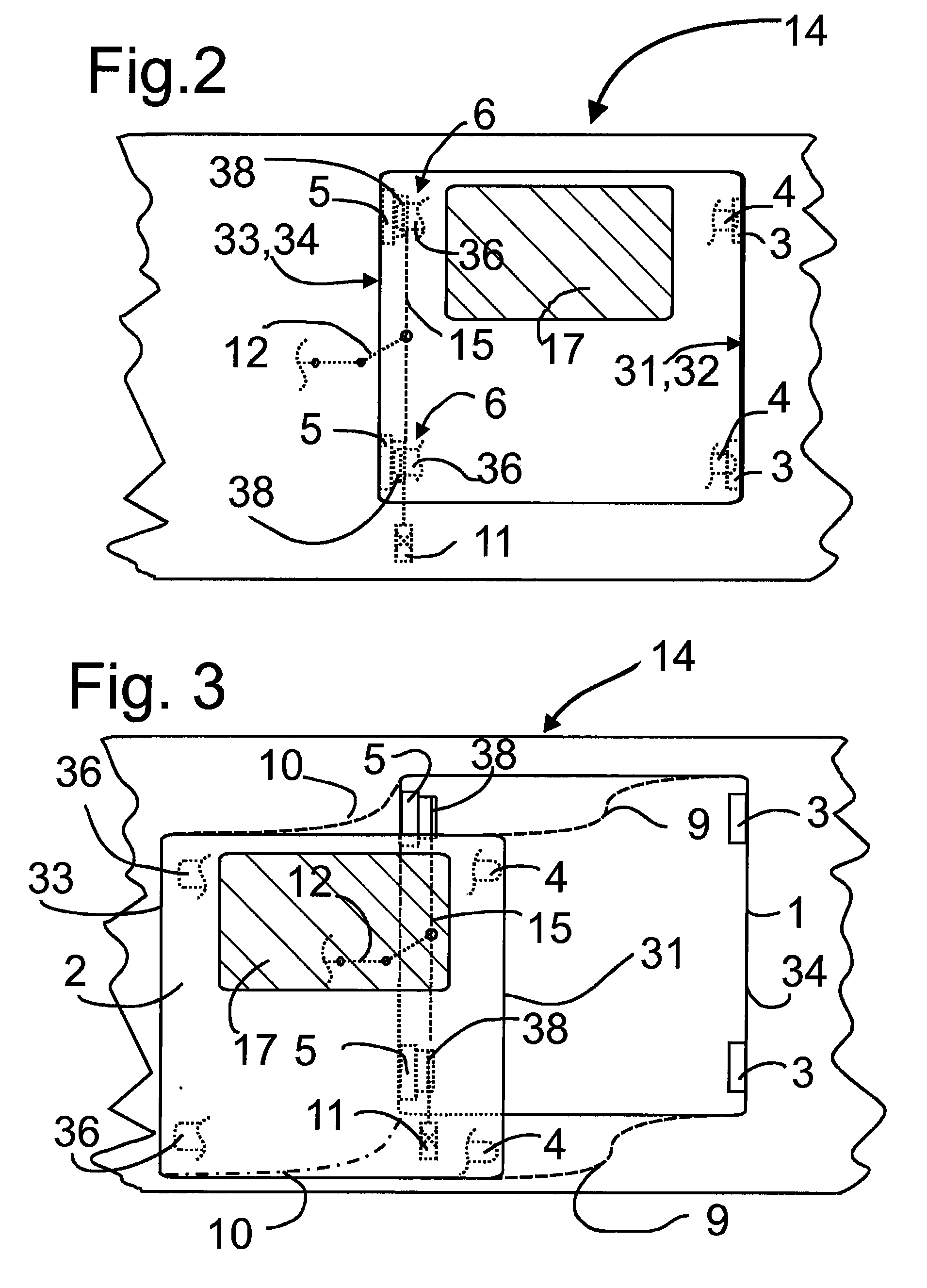Interlock for swing-out door
- Summary
- Abstract
- Description
- Claims
- Application Information
AI Technical Summary
Benefits of technology
Problems solved by technology
Method used
Image
Examples
Embodiment Construction
[0026]FIG. 1 shows a door portal 1 with a door 2 located therein comprising a primary closing edge 31 and a secondary closing edge 33. A first trajectory 9 is shown in dashed lines on the primary closing edge 31, a second trajectory 10 is shown on the secondary closing edge 33. The primary and secondary closing edges 31, 33 are guided along the trajectories 9, 10 during opening and closing. The primary closing edge 31 is located on the door 2 to the front in the closing direction, the secondary closing edge 33 is located on the door 2 to the rear in the closing direction. The primary and secondary closing edges 31, 33 are the vertically extending edges of the door 2. The primary closing edge 31, in the closed position of the door 2, directly abuts against a vertically extending primary portal edge 32, and the secondary closing edge 33 of the door 2 directly abuts against a secondary portal edge 34.
[0027]The door 2 is in the closed position, with the seals 8 abutting against their as...
PUM
 Login to View More
Login to View More Abstract
Description
Claims
Application Information
 Login to View More
Login to View More - R&D
- Intellectual Property
- Life Sciences
- Materials
- Tech Scout
- Unparalleled Data Quality
- Higher Quality Content
- 60% Fewer Hallucinations
Browse by: Latest US Patents, China's latest patents, Technical Efficacy Thesaurus, Application Domain, Technology Topic, Popular Technical Reports.
© 2025 PatSnap. All rights reserved.Legal|Privacy policy|Modern Slavery Act Transparency Statement|Sitemap|About US| Contact US: help@patsnap.com



